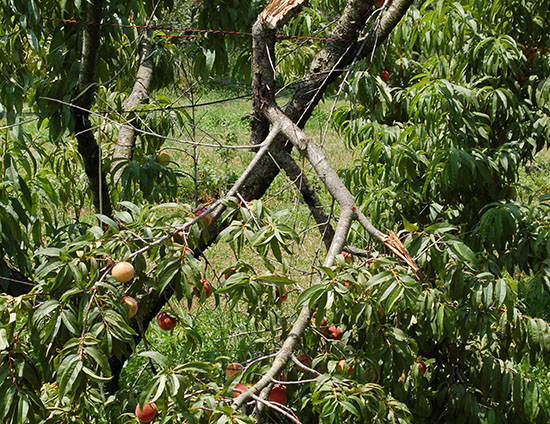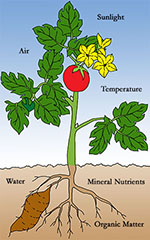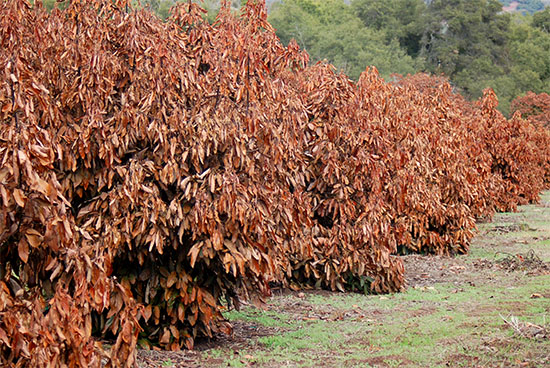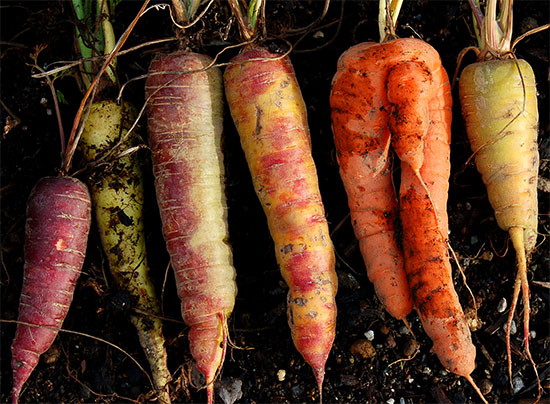Kathryn and I taught a Master Gardener training class on plant disorders, diseases, and pests yesterday. We’ve learned through experience that most plant problems result from poor growing conditions. Growing conditions are physical and cultural environmental factors that affect the well being of your plants.
Light, water, temperature and soil nutrients, for example, are all physical factors of the environment that profoundly affect plant performance. Cultural environmental factors are the things we, as plant managers, do to the plants in our care, including pruning to improve air movement, thinning heavy crops of fruit, and avoiding overcrowding among many others. Good growing conditions are the foundation for plant health, and eighty percent of plant problems are due to poor growing conditions.
Sunlight is, of course, vital. All green plants manufacture food from sunlight through photosynthesis. Fertilizer and mineral nutrients are sometimes called “plant food” but that is an erroneous concept. Sugar is actually “plant food” and plants create sugar out of solar energy, water and carbon dioxide. Obviously, if a plant does not get enough sunlight it becomes malnourished and could even starve to death.
Water, like sunlight, is also absolutely vital for a plant’s well being. It moves through the plant’s veins like blood in our own bodies. Water transports food and mineral nutrients to every cell. Roots absorb water, which moves up through the stem, and is lost to the air through the leaves. Losing water through the leaves is the pump that drives water movement through the plant’s body. If the pump stops, the plant can get into serious, life-threatening trouble very quickly.
Many people pay attention to a plant’s temperature needs, because they are aware of the danger of winter cold. In the United States, the Department of Agriculture (USDA) created a winter hardiness zone map, and almost all plant labels in U.S. nurseries list the USDA zones to which the plant is adapted. For example, a plant label may list appropriate zones as 9 through 11. This means that the plant will freeze to death in zones 1 through 8. This zone system does not reflect other temperature factors, such as heat tolerance, or whether a plant needs winter chilling to flower and set fruit.
Healthy soil is a microcosmic ecosystem, filled with millions of bacteria and fungi, and with organic matter. This teeming micro-flora and fauna maintains mineral nutrients, out-competes pests and disease-causing pathogens, and conserves water. If your soil is healthy and rich you have met the most fundamental requirement for happy, healthy plants.

A large branch of this peach tree has broken off because the fruit crop was too heavy and should have been thinned.
Plant problems caused by inadequate growing conditions are called disorders, not diseases or pests. A disorder is caused by too much or too little of some critical factor: light, water, temperature, or nutrients. Disorders can also be caused by poor management, such as failure to thin a heavy crop of fruit, lack of dead-heading (removing the spent flower clusters before they make seeds), or pruning at the wrong time of year. By contrast, a disease is caused by a pathogen, such as a fungus, bacterium, or virus. A pest is a destructive organism, such as an insect, mite, nematode, bird, rodent or deer.
Sometimes it can be difficult to determine whether you are dealing with a disorder, a disease, or a pest. Yellowing leaves, for example, can be due to many different causes, such as lack of nitrogen (disorder), root rot fungus (disease), or aphids (pests). Accurate diagnosis requires detective work. Like a forensic scientist, you need to collect evidence, examine the clues, and arrive at a diagnosis. The process involves asking questions designed to detect information that eliminates, one by one, all alternative causes and results in an accurate diagnosis. In our book “What’s Wrong With My Plant (And How Do I Fix It)?” Kathryn and I created an innovative new diagnostic system using pairs of questions arranged in illustrated flow charts. It’s easy to use. And you don’t have to know the name of a plant in order to figure out what’s wrong with it!





Leave a Reply